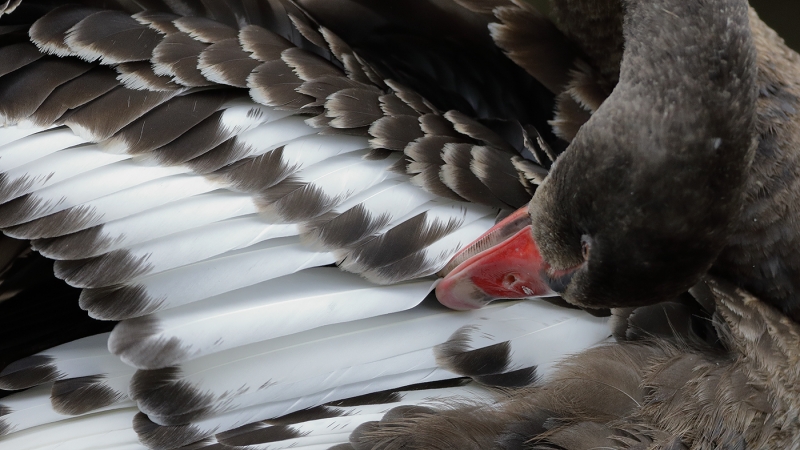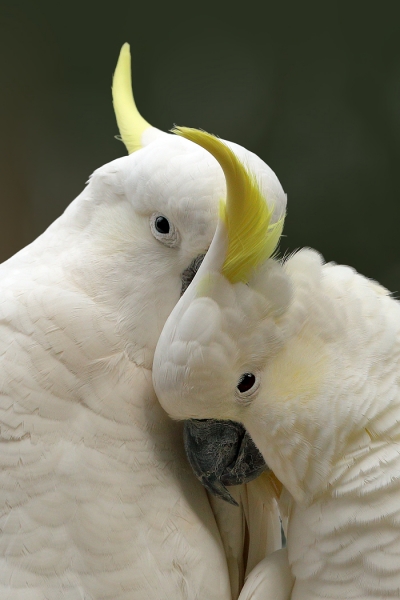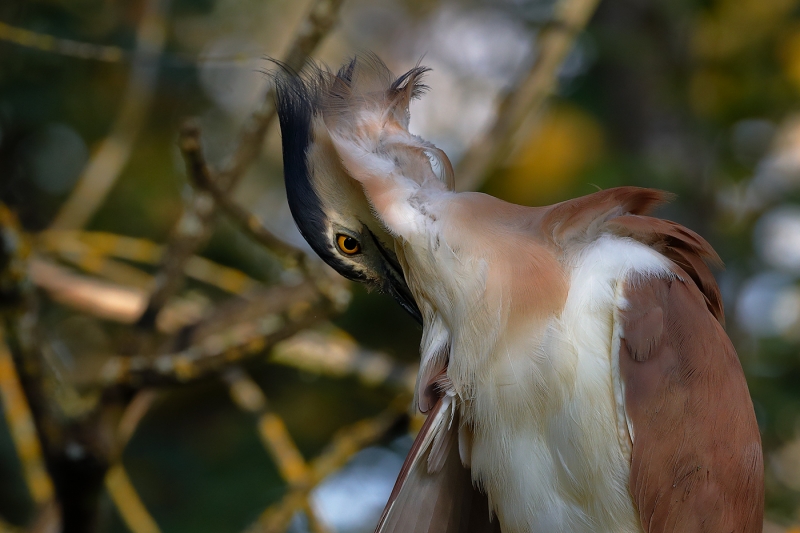I absolutely love this topic. We spend so much of our time chasing around after birds, trying to find a way to get a clear shot or working on how we can get closer to them. So, it’s wonderful when they eventually settle down to preen and we are delivered an almost calm opportunity to consider our camera settings, our visual point of view, our light and perspective and how we can best take advantage of this lull in the chase to make some well planned, beautiful images.
Preening time gives the photographer an opportunity to spend time with a static subject, watching, almost voyeuristically, as it performs its ablutions; primping and grooming, devoting effort to both cleansing and making itself look attractive. During these special moments, we get a chance to feature our birds in the “outdoor studio” and capture their portraits, appreciating this intimacy and rewarding our viewers with a more sensitive and potentially artistic capture.
At some point during the day, each species will either individually or collectively perform their daily spruce-up. I spent a week in Forbes by the river and a pair of Sacred Kingfishers used the same branch every afternoon to preen. It doesn’t take many visits to your local waterhole or bird bath to watch your regular backyard visitors in order to work out where and when to set yourself up for photographic success. Often as not they will use the same tree, branch or roof gutter for grooming. They’ll slash and make a fuss on the same side of a wetland. Watch for habits. We will potentially snap images of twisted necks, legs akimbo, acrobatic hanging upside down and ruffled feathers as we are delivered a plethora of odd shaped body positions, but throughout all this can come a symmetry of lines, curves and colour combinations. The accepted norm is no longer and we are treated to the ridiculous, the humourous and even the elegant.
In this category two very different images have been judged as joint winners. Tim Van Leeuwin’s Black Swan is an exquisite, very personal close-up of the act of preening, and Ian Wilson has presented an artistically sensitive image of a pair of Sulphur-crested Cockatoos.
Joint Winner: Black Swan - Tim Van Leeuwin (Image ID 25639)
Wow! Preening up close and personal. At first glance it looked like a piano keyboard. As I zeroed in on the feathers my eyes just kept circulating and enjoying the grey-white-grey-white juxtaposition, and then the softness of the short highlight rich under feathers became apparent. Only then did my eyes roam to the only colour in this otherwise monochromatic image. I felt a pang of affection for this bird, watching it re-zip its flight feathers, being treated to such an intimate insight into the process including seeing inside its slightly open, ridged mouth. But this image just keeps on giving. The most poignant focal point in this image is the “wave” of the feather created by this act of grooming. The bird’s head does not need to be in focus as it potentially would have been a distraction from the primary act. A wonderful composition and an image full of trust shared between the subject and the photographer.
Joint Winner: Sulphur-crested Cockatoo - Ian Wilson (Image ID 26112)
Another all-but-monochromatic image, save two pastel yellow flashes. This image is full of artistic merit. The graceful alternating outlines of each bird push the subtle curves down through the centre of the image. The reverse waves of the birds’ crests flowing over the forehead and beak create soft, shallow curves suggestive of comfort, safety, and familiarity. In direct contrast are the intelligent, deep black opaque eyes. How striking are these against the gently layered backdrop of clean white feathers. The portrait style positioning of the two birds is human-like, exuding a gentle, calm warmth between the pair bond. Congratulations on seeing this image as it developed in front of you and recognizing its worth as an image. I really enjoyed this image and its attendant sharpness and clarity.
Commended: Grey Teal - Con Boekel (Image ID 25735)
My first thought with this image is to congratulate the photographer for his use of a medium depth aperture (f9), and braving a higher ISO (2000) to go with his relatively fast shutter speed (1/1000). All too often photographers are locked onto a wide open (and therefore shallow DOF) aperture just to get as much light as possible and as low an ISO as possible to go with their fast shutter speed. But, the sacrifice is that all of your subject is not in focus. And unsightly blur of detail that expresses interest in the minutiae of the image can be lost. Here, for example, I am enjoying the detail of the second toe claw on the back foot, and the fact that the bird is precariously balanced with a half foot on either side of a sharp poking up piece of wood. This detail would have been lost at f5.6. The green duckweed garland is a nice colour tie-in to the only other real colour splash in the image, and I am intrigued by the plasticky grey reptilian pattern on the bird’s legs. Something you don’t often see. A really good image.
Commended: Yellow-tufted Honeyeater - Stephen Garth (Image ID 25844)
With its head turned, and no eye contact, usually we wouldn’t give this image a second look. However the “yellow devil” horns give this preener a unique perspective. Some might even say a Viking-like persona. Fluffed up with bulky feathered coat wrapped around, surveying its territory from on high.
This image was taken using an aperture of f4, and to shoot birds at a medium distance at this small an aperture is definitely a specific choice of the photographer, trading additional light for a very narrow DOF. There is definitely a high probability of not acquiring enough front to back focus of the primary subject. As can be seen here the front of the branch that the bird is perched on is out of focus (OOF) and the left tufted horn is just starting to lose sharpness, so that gives you an idea of how narrow the focus slice was that this photographer had to work within. If, for example, both the “tufted horns” were out of focus, and any more of this bird’s body front-to-back was OOF, then this image wouldn’t have anywhere near as much interest, and wouldn’t be in the judging position before you now. Fortunately, the critical elements are in focus, giving this image an interesting and unique perspective.
Commended: Australasian Gannet - Kim Wormald (Image ID 26104)
This image totally revolves around the distraction of the bird from its preening, by a flyaway feather. You can see the bird is frozen in the act of cleaning and refurbishing one of its brown tail feathers and still has a remnant of the wispy errant white feather stuck to its beak. It almost seems to be seeing it off, as if farewelling an old friend. A really nice sharply focused image with an enjoyable grey/white and white/grey cross colour textural theme going on.
Commended: Nankeen Night-Heron - Tim Van Leeuwin (Image ID 25642)
Sharp, with plenty of feather detail. This image captures an adult showing off its cinnamon colour to perfection along with its peach highlights. Very nicely lit, and showing a clear, ever vigilant yellow eye. Full focus throughout the image is most enjoyable and shows us clearly the underparts of its neck. The subject is far enough isolated from the distractions of the background, but I feel the background is “truth in imagery” because these birds generally spend the bulk of their time in dense foliage, and it is in keeping with their habits.





